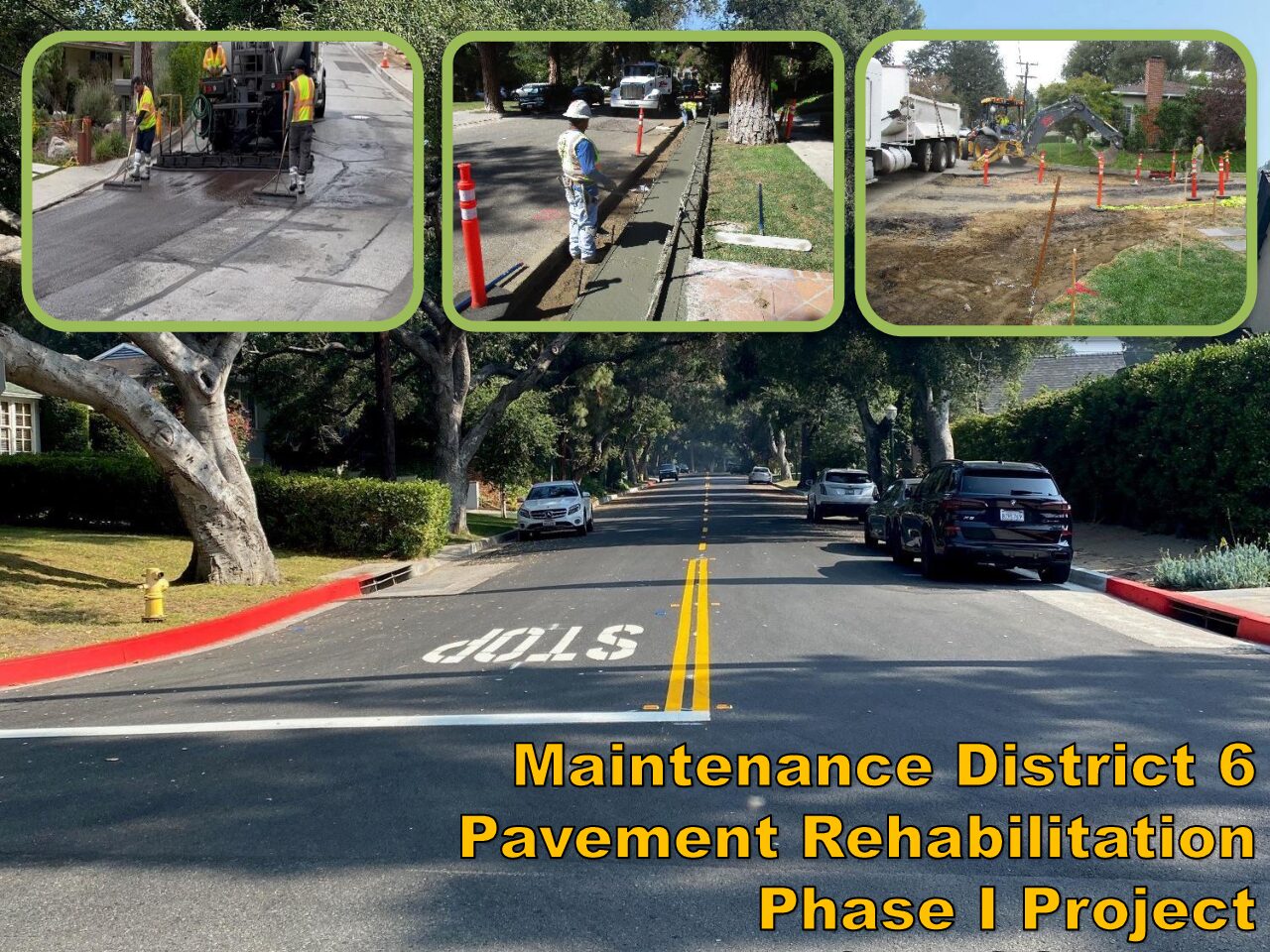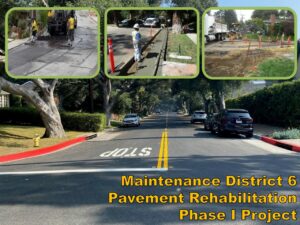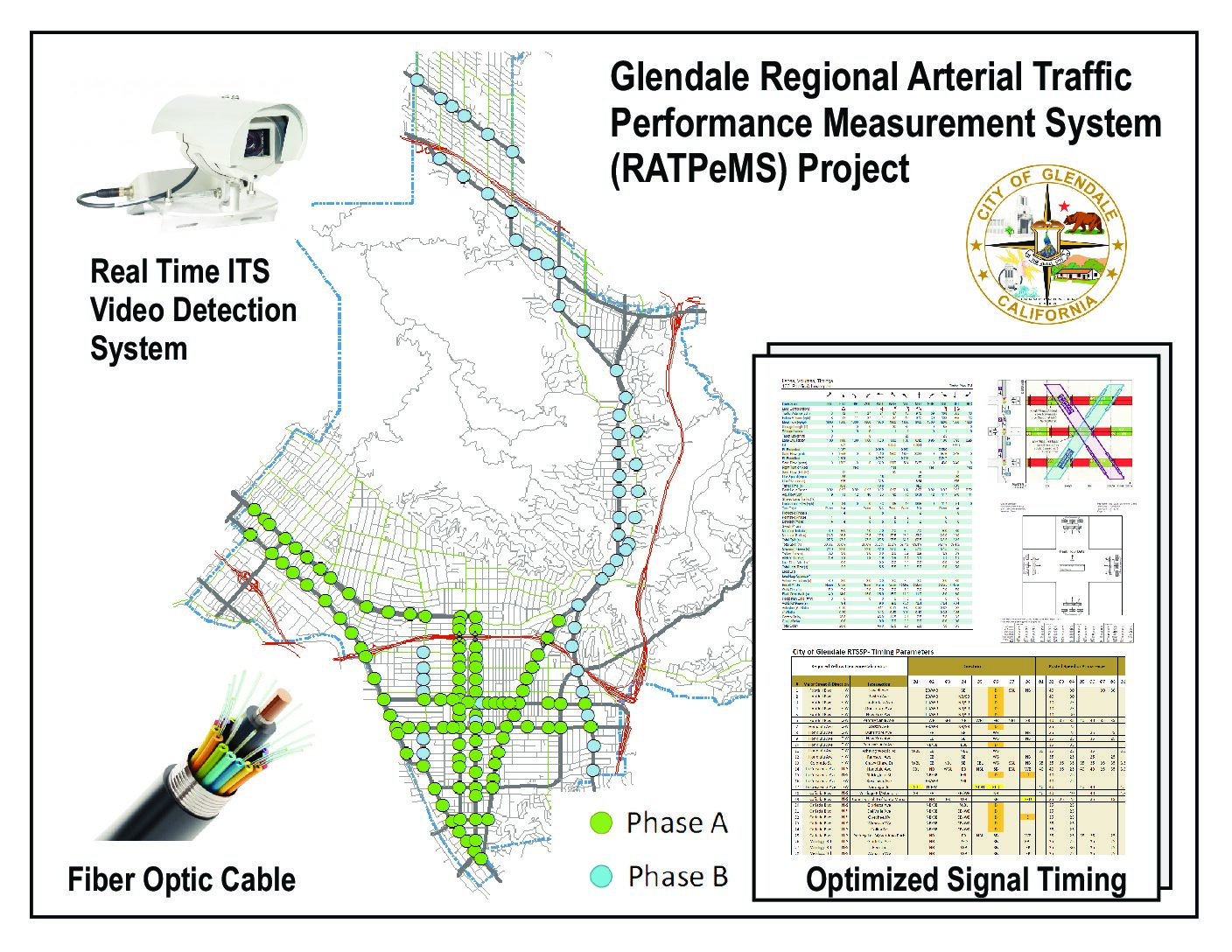Maintenance District 6 Pavement Rehabilitation Phase I Project
Location
City of Glendale Maintenance District 6 (citywide)
City or County Responsible for Project
City of Glendale
Category
Roads: Efficient and Sustainable Road Maintenance, Construction and Reconstruction Projects.
Description
The MD6 Phase I project consisted of removal and disposal of asphalt and Portland cement concrete (P.C.C.) pavements, including installation of: 0.4 miles of grinding and placement of Asphalt Rubber Hot Mix pavement (ARHM); 1.0 miles of ARHM over Asphalt Rubber Aggregate Membrane (ARAM system III); 1.1 miles of emulsion aggregate slurry (Slurry Seal Type II) over ARAM (ARAM System I); 2 miles of crack sealing material and emulsion aggregate slurry (Slurry Seal Type II).
The project achieved safety, preservation, and sustainability goals because of the extensive work performed throughout the City’s Maintenance District. The project is a first for the City, in which various pavement treatment systems were implemented to improve the City’s Pavement Condition Index (PCI) which required City staff to be attentive of the construction schedule and budget. The City implemented six different pavement treatments throughout the project location. The project exemplified a new standard for the City by completing a substantial amount of work that met the goals and priorities set by the City Council and requested by the community. The project should be recognized as a milestone and a new standard within the industry due to the dynamic methods that were applied that can help improve project deliverables. By focusing our efforts to improve every aspect of the City’s infrastructure, this project was able to successfully address critical improvement needs.
The city fostered lines of communications with the Glendale Police Department and the City’s Community Relations Coordinator to discuss potential impacts to emergency and maintenance operations well in advance of the start of the project. In addition, an overwhelming amount of community outreach was conducted to ensure residents were aware of construction activity within their respective neighborhood. The relationships generated during the process of this project allowed City staff to build closer ties to the community. The opportunity to engage with various City departments forged crucial processes that will benefit future projects similar in scope and size in the City. In addition, the City installed bike routes throughout the project to improve connectivity. Overall, this project exemplified the basic need for better infrastructure to improve the quality of life within a community. The project improvements encourage residents to utilize active transportation including walking and biking to nearby transit stations.
Project submitted by
Sarkis Oganesyan
Deputy Director of Public Works/City Engineer
City of Glendale Public Works Department
633 E. Broadway, Rm 205, Glendale, CA 91206
soganesyan@glendaleca.gov
(818) 548-3945



